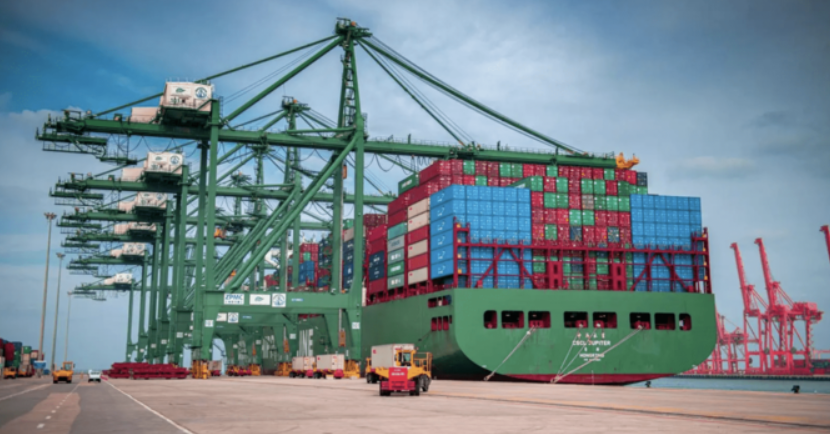
27 Dec 2024
RIYADH: Saudi Arabia’s logistics sector has seen notable growth, with the number of facilities increasing by 267 percent since 2021, according to a report by the General Authority for Statistics.
In 2023, the Kingdom had 22 hubs spanning over 34 million sq. meters, underscoring the nation’s push to become a regional logistics leader under its Vision 2030 plan.
The Eastern Province region topped the list in terms of the number of logistics centers, with six hubs covering an area of 6.3 million sq. meters.
However, the Makkah region occupied the highest total area, with five centers spanning 20 million sq. meters, followed by Riyadh with five centers covering 4.9 million sq. meters.
The report also highlighted that the Kingdom had 12,451 warehouses in 2023, covering a total area of 22.8 million sq. meters.
Riyadh accounted for 52.9 percent, occupying 10.6 million sq. meters, followed by Makkah with 17.9 percent, the Eastern Province with 14.3 percent, and other regions making up the remaining 14.9 percent.
According to the report, general warehouse licenses were the most prevalent, totaling 6,923 and making up 55.6 percent of all licenses. Humidity-controlled warehouses followed with 2,115 licenses, representing 17 percent of the total, while refrigerated warehouses accounted for 16 percent with 2,006 licenses.
The maritime sector dominated cargo transport by quantity with 308.7 million tonnes, followed by 24.9 million tonnes transported via land, 14.3 million tonnes by rail, and 918,000 tonnes via air.
The report also revealed that the goods transport segment registered 7,963 valid licenses, with Riyadh region leading the way with 1,996 active licenses.
Saudi Arabia’s warehousing and logistics sector is undergoing a transformative surge, driven by Vision 2030 and supported by significant government and private investments.
According to a November report by Maersk, a leader in integrated logistics, the Kingdom is poised to become a global trade and logistics powerhouse. The market is projected to reach $38.8 billion by 2026, growing at a compound annual growth rate of 5.85 percent.
This growth reflects Saudi Arabia’s strategic positioning as a regional logistics hub, supported by its $106.6 billion commitment to expanding land, air, and sea cargo capacities.
The Saudi Ports Authority’s $4.5 billion investment into maritime logistics in 2023 is a testament to this vision. Coupled with giga-projects like NEOM and the National Industrial Development and Logistics Program, the country aims to capture 55 percent of the Gulf Cooperation Council’s logistics market while exponentially increasing non-oil exports.
According to Knight Frank’s Industrial and Logistics Market Review for the first half of 2024, warehouse occupancy in Saudi Arabia reached a record 97 percent nationally in mid-2024, underscoring strong demand for storage and light industrial facilities.
Riyadh and Jeddah have emerged as focal points, with high lease rates and increasing global interest from firms like Maersk, DB Schenker, and DP World.
Additionally, the rise of e-commerce and digital logistics solutions has catalyzed innovation and competition, positioning Saudi Arabia at the forefront of logistics advancements in the region.
Digital transformation
According to the report, the postal and parcel sector in Saudi Arabia handled over 140 million items in 2023, supported by 1,300 sales outlets, with an average delivery time of just 2.45 days — highlighting the sector’s growing efficiency.
Meanwhile, customs and digital transport advancements continue to reshape the logistics landscape. Customs clearance activity licenses totaled 170 in 2023, with airports accounting for 47 licenses.
Additionally, 37 delivery app companies were licensed for freight transport, signaling a significant shift toward digital innovation in the sector.